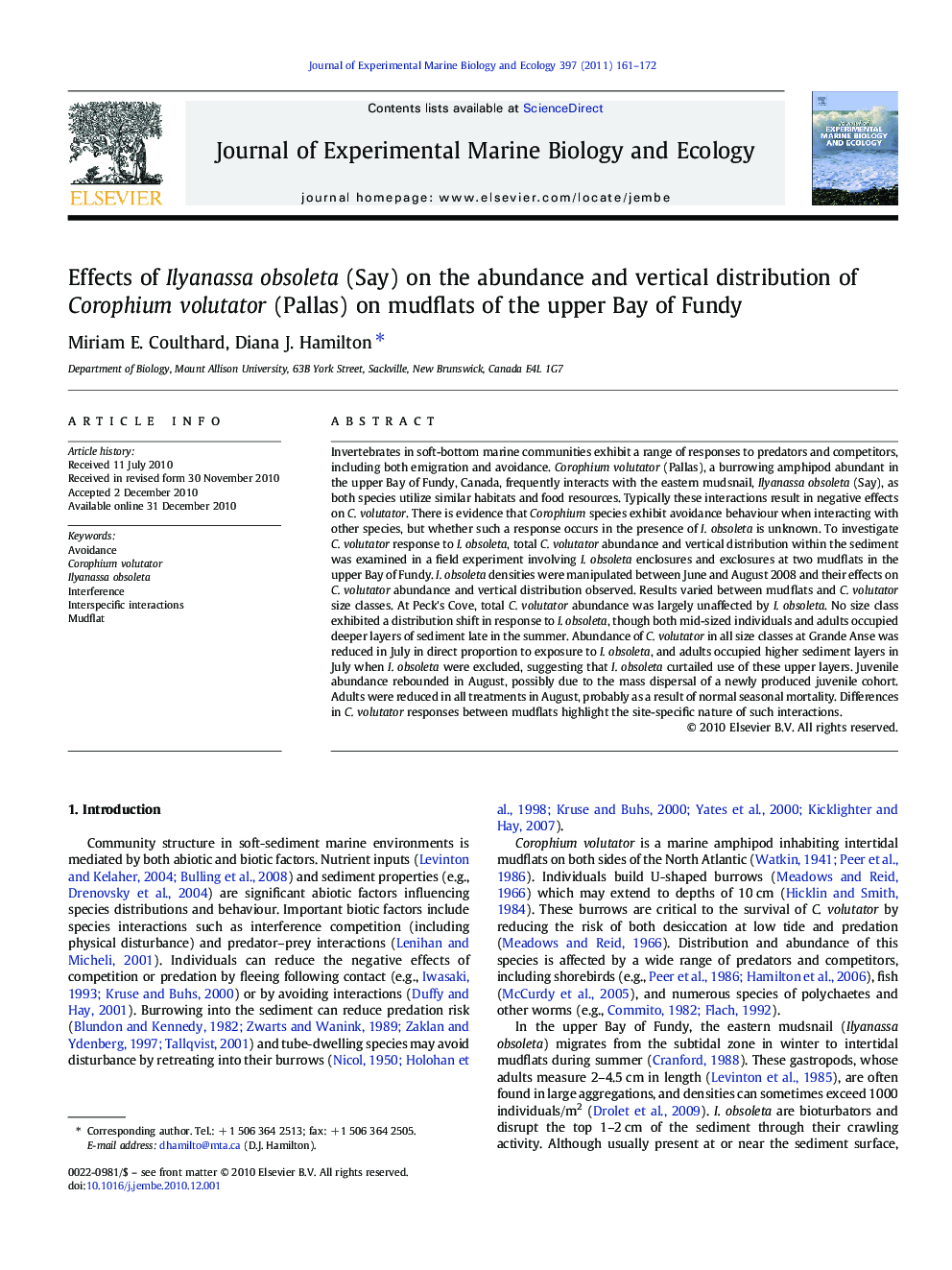| Article ID | Journal | Published Year | Pages | File Type |
|---|---|---|---|---|
| 4396375 | Journal of Experimental Marine Biology and Ecology | 2011 | 12 Pages |
Invertebrates in soft-bottom marine communities exhibit a range of responses to predators and competitors, including both emigration and avoidance. Corophium volutator (Pallas), a burrowing amphipod abundant in the upper Bay of Fundy, Canada, frequently interacts with the eastern mudsnail, Ilyanassa obsoleta (Say), as both species utilize similar habitats and food resources. Typically these interactions result in negative effects on C. volutator. There is evidence that Corophium species exhibit avoidance behaviour when interacting with other species, but whether such a response occurs in the presence of I. obsoleta is unknown. To investigate C. volutator response to I. obsoleta, total C. volutator abundance and vertical distribution within the sediment was examined in a field experiment involving I. obsoleta enclosures and exclosures at two mudflats in the upper Bay of Fundy. I. obsoleta densities were manipulated between June and August 2008 and their effects on C. volutator abundance and vertical distribution observed. Results varied between mudflats and C. volutator size classes. At Peck's Cove, total C. volutator abundance was largely unaffected by I. obsoleta. No size class exhibited a distribution shift in response to I. obsoleta, though both mid-sized individuals and adults occupied deeper layers of sediment late in the summer. Abundance of C. volutator in all size classes at Grande Anse was reduced in July in direct proportion to exposure to I. obsoleta, and adults occupied higher sediment layers in July when I. obsoleta were excluded, suggesting that I. obsoleta curtailed use of these upper layers. Juvenile abundance rebounded in August, possibly due to the mass dispersal of a newly produced juvenile cohort. Adults were reduced in all treatments in August, probably as a result of normal seasonal mortality. Differences in C. volutator responses between mudflats highlight the site-specific nature of such interactions.
Research highlights►Ilyanassa obsoleta reduces Corophium volutator abundance through disturbance. ►Use of upper sediment layers by adult C. volutator is restricted by I. obsoleta. ►Juvenile C. volutator vertical distribution is unaffected by I. obsoleta. ►Interactions between I. obsoleta and C. volutator are site-specific.
